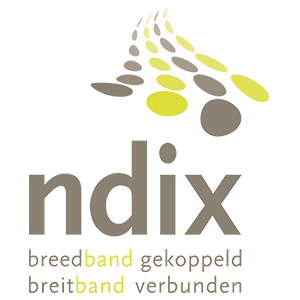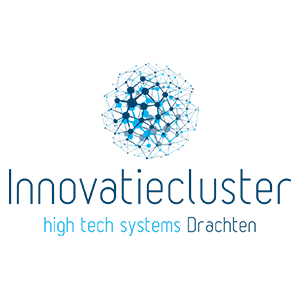During the lunch there is an option to do one case, after signup you can submit your preference.
1 NDIX: a prototype platform for innovation
 NDIX, as a businessmodel, is the prototype of a platform. The term platform can be used for a great many things, like a website (e.g. marktplaats.nl) or a meeting format. In this lecture I want to explain to you what the essence of a platform is, with the iPhone as a prominent example. I will illustrate the do’s and dont’s regarding a platform, the factors of success and the risks of failure. NDIX is a bordercrossing platform, active in the Netherlands and Germany. I will tell you about the consequences, but also the possibilities that arise because of this. Finally, especially with regards to the UT, I want to tell about the possibilities and the encouragements that a platform can give for innovation; the development of new possibilities as well as the increase in use of new ICT applications. Examples of this are the WIF-infrastructure om the city centre (which is connected with the one on the campus) and the projects of researchers with whom NDIX is involved.
NDIX, as a businessmodel, is the prototype of a platform. The term platform can be used for a great many things, like a website (e.g. marktplaats.nl) or a meeting format. In this lecture I want to explain to you what the essence of a platform is, with the iPhone as a prominent example. I will illustrate the do’s and dont’s regarding a platform, the factors of success and the risks of failure. NDIX is a bordercrossing platform, active in the Netherlands and Germany. I will tell you about the consequences, but also the possibilities that arise because of this. Finally, especially with regards to the UT, I want to tell about the possibilities and the encouragements that a platform can give for innovation; the development of new possibilities as well as the increase in use of new ICT applications. Examples of this are the WIF-infrastructure om the city centre (which is connected with the one on the campus) and the projects of researchers with whom NDIX is involved.
NDIX started in 2000 as a traditional (sic) internet-exchange in Enschede with the goal to improve the availability of Internet (and later on also all other forms of ICT services). A 100MB/s connection was standard in every studentroom on the campus, for companies there were no options outside the campus. Nowadays NDIX has grown to be an exchange/marketplace for not only Internet, but also for telephony, TV, Cloud, Sees, datacenter services and more. In short, everything that can be provided digitally, often circumventing the Internet (the bad neighborhood). NDIX has more than 3000 businesses as their customers (and recently acquired 120 consumers as well), who make use of the ICT services from almost 100 providers, using exclusive interchanges in more than 100 cities in the Netherlands and Germany. An open network avant-la-lettre.
2 Innovatiecluster Drachten: Our robots save lifes!
 Healthcare technology evolves less fast while there are plenty of new ideas, technologies, techniques and studies. Before using new technology and techniques within the medical industry, they have to become mature. Mature within the market but also mature within the medical companies. Clinical trials, verification and validation takes a lot of time and for each alteration it has to follow that path again. The same applies to the electronics and embedded software in the healthcare industry.
Healthcare technology evolves less fast while there are plenty of new ideas, technologies, techniques and studies. Before using new technology and techniques within the medical industry, they have to become mature. Mature within the market but also mature within the medical companies. Clinical trials, verification and validation takes a lot of time and for each alteration it has to follow that path again. The same applies to the electronics and embedded software in the healthcare industry.
BD Kiestra designs hardware and software to automate microbiological laboratories. Initial using PLC’s and PC’s, the time is there, for what I call, smart and distributed electronics. Every function will become smarter. Every function or module gets its place in a decentralized network. Networks become self-healing. Systems become more autonomous with the use of artificial intelligence. In the end, robots will take over the human tasks, but lets us first make it smarter.
